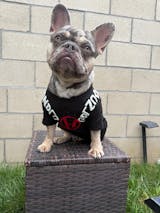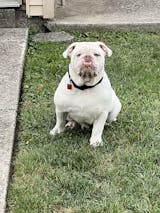Types of Cysts on Dogs: What to Look For
In the post, we will unravel the mystery behind unwanted bumps and lumps, explaining what cysts are and where they commonly occur on a dog’s body. We will also dive into the underlying causes behind these unwanted bumps. Join us as we navigate through the world of dog care, shedding light on the common types of cysts that may affect our furry friends. Let’s ensure your pup’s tail keeps wagging, and arm you with the knowledge about your pup’s health and well-being.

What are Cysts on Dogs?
Cysts on dogs are sac-like structures that can form beneath the skin or within the internal organs. These fluid-filled pouches contain various substances such as pus, air, or other bodily fluids. They are commonly found on a dog's skin; appearing as small, round lumps. While they can occur anywhere on the body, cysts are often found on the neck, head, and trunk regions. These cysts may visually resemble small nodules or bumps, often varying in shape and size. Senior Tail Waggers offers a guide on various dog tumors and cysts dogs experience along with providing pictures, helping you determine which issue is prevalent to your pup. Understanding the nature of these cysts is crucial for proper identification and management.
What Causes Cysts on Dogs?
Certain breeds are predisposed to developing cysts; such as Basset Hounds, Bulldogs, English Springer Spaniels, Boxers, Schnauzers, and Golden Retrievers being among them. Genetic factors play a role in this predisposition. Additionally, cysts can be triggered by injuries, infections, or specific diseases. Trauma or damage to the skin can lead to the formation of cysts, as the body's natural response includes encapsulating foreign materials. Infections, whether bacterial or fungal, can cause cysts to develop as a result of the body's attempt to isolate the infection. Furthermore, certain diseases may contribute to cyst formation in dogs, emphasizing the importance of regular check-ups to catch and address these issues early.
Common Types of Cysts on Dogs:
True and False Cysts: True cysts are lined with epithelial cells and contain fluid or semi-solid material. False cysts, on the other hand, lack this lining and are typically formed by the accumulation of blood, pus, or other substances. Identifying whether a cyst is true or false is crucial for determining the appropriate course of treatment.
Sebaceous Cysts: These cysts develop from blocked hair follicles or skin glands, resulting in the accumulation of sebum, a waxy, oily substance. Sebaceous cysts often appear as firm, round lumps beneath the skin and may discharge a cheesy material when punctured.
Follicular Cysts: Formed as a result of hair follicle abnormalities, follicular cysts are typically filled with a fluid-like substance. They can be caused by ingrown hairs or blocked hair follicles and may present as raised bumps on the skin.
Dermoid Cysts: Dermoid cysts are rare and are usually present at birth. These cysts contain tissue similar to skin and hair, and they can occur on various parts of the body. While dermoid cysts are typically benign, surgical removal may be recommended if they cause discomfort or pose a risk of infection.
How To Help:
If a cyst on your dog is suspected to be caused by a bacterial or fungal infection, Squishface products can be a valuable option for remedying the situation. Squishface offers convenient Wrinkle Wipes designed to clean the affected area by removing debris and dirt. These wipes contain the helpful ingredients known as ketoconazole and chlorhexidine - which are effective in the fight against bacteria, yeast, and fungus. Regular use of these wipes can help maintain cleanliness, minimizing the risk of infections and promoting a healthy environment around the cyst.
After wiping your dog down with Wrinkle Wipes, it would be helpful to apply a topical cream. That’s where Squishface Pastes come to the rescue! Squishface Wrinkle Paste is intended for all dog breeds and features a blend of coconut oil, avocado oil, and shea butter, known for their moisturizing and soothing properties. Beyond providing a calming effect, these pastes act as a protective barrier, assisting in the prevention of skin irritations and promoting overall skin health. Choose the Squishface product that suits your dog's needs to address cyst-related concerns with care and effectiveness. Squishface also offers a tiktok guide that demonstrates how you can use these pastes to effectively rid your dog of cysts between their toes.
@squishface.com Toe cysts? Not a problem! Here's how to keep those paws pristin! 🙌🙌 #PetsOfTikToK #englishbulldog #bulldogsoftiktok #foryoupage #doghealth #pettips #learnontiktok ♬ Calm background music with acoustic guitar and saxophone(1288148) - ame
The Bottom Line:
Understanding and addressing cysts on dogs is a crucial aspect of responsible pet ownership. Regular checks, grooming sessions, and awareness of your dog’s health are essential for early detection and proper care. If you encounter a cyst potentially caused by bacterial or fungal infections, consider incorporating Squishface Wrinkle Wipes and Paste into your daily dog care routine. By staying proactive and having the right knowledge and products, you’re helping to ensure your pup lives a happy, healthy life for years to come.
Be sure to follow us on TikTok, Instagram, Facebook, Pinterest, YouTube, and visit our blog weekly for more tips on caring for your beloved furry buddy, and the latest on all things Squishface!










